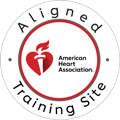Many people have never heard of the disease presented in the title above, and even fewer can spell it, pronounce it, or explain what it is. As someone who suffered through this awful condition for over 6 months about 6 years ago, I learned about it the hard way. I’m going to use this paper to explain to you the damages of Chronic Inflammatory Demyelination of Polyneuropathy(CIDP) on the body.
CIDP is an extremely rare condition, caught by less than a hundred people in the entire world per year. It is considered the chronic form of Acute Inflammatory Demyelination of Polyneuropathy(AIDP), also known as Guillain Barre syndrome(GBS). The scariest part of this condition is that absolutely anyone can catch it for no reason, at least as far as scientists know as of now. GBS normally secedes an illness of some sort, viral or infectious; CIDP patients do not need a preceding illness to catch it.
When a person has CIDP, their nerve roots and peripheral nerves become inflamed and the myelin sheath protecting the nerves is torn down slowly. The more the myelin sheath is worn down, the slower your nerves are able to send signals throughout your body, which causes gradual weakness and eventually paralysis. The extremities are affected first, and it spreads medially from there. After a few weeks, you have no usable function in your fingers or toes, and your arms and legs struggle to move. A few weeks after that, you nearly can’t move at all without the assistance of another person. If not treated in time, the paralysis will eventually spread to your lungs, and cause a gradual worsening in shortness of breath until you can’t breathe at all and suffocate.
The only person that can help treat a case like this is a neurology specialist. As said before, most people, including doctors, have never even heard of this condition, and must be treated by someone who specializes in that specific field. If not treated immediately, one must undergo a dangerously heavy dosage of medical steroids, preferably Prednisone. If “dangerously heavy dosage” doesn’t give you a good enough example, I was put on a dose equaling six times the recommended dose for a full grown adult at only 15 years old. The specialist will have you undergo several tests each week to check your strength and reflexes. These tests include shock therapy as well. Shock therapy is an extremely painful procedure in which the patient is connected to several wires and has electrical impulses sent through the body in an effort to revitalize the patient’s reflexes and nervous system. The medical steroids do not have the same effect on every patient, and works better and faster for some than others. Such a high dosage of medical steroids also leaves unwanted side effects including overactive bladder, loss of sleep, highly increased appetite, and worst of all, bloating in the face and torso from a retention of water. Once the signs and symptoms seem to be disappearing, the patient will be slowly weaned off the medicine until it is no longer needed.
There is no way to prevent CIDP from affecting you. If you begin to feel weakness in your limbs and/or fingers or motor function impairment and your general doctor cannot pinpoint the cause or problem, set an appointment with a neurology specialist and find out what is causing this. The faster you find out you have it, the easier and faster you can treat it and get rid of it. Speed of diagnosis is a huge factor in getting rid of CIDP, as well as age. Patients younger than 10 or older than 30 are in greater danger than those between those ages.
Reference:
WebMD.com
Call Us Now
Get the Best CPR Class in Tampa Today!
Written by Max Price while taking Anatomy and Physiology at St. Louis Community College. Max Price is also an outstanding stand up comic.


